The following information is based on OS X 10.10 Yosemite. If you are running an earlier version of OS the information might still useful but you may have to look in different settings.
OS X has four account types – Administrator, Standard, and Managed (with Parental Controls). The Administrator account is the most important.
Managed with Parental Controls: In an account managed by parental controls the administrator can place restrictions on: inappropriate Internet content, the amount of computer use, and access to applications, email, and iChat.
Parental Controls are great for managing how your kids use the Mac. This account can be made more restrictive that the Standard account. Parents can allow use of specific apps, printers, web sites etc. The important distinction between a Standard and Managed account is that the Managed account has restricts on the time, the use of applications and the Internet.
Create a new Managed account
The first step in setting up Parental Controls is to create a new Managed account. You can do this by launching the System Preferences application and then clicking Users & Groups. You will be taken to a preferences pane that looks something like this.
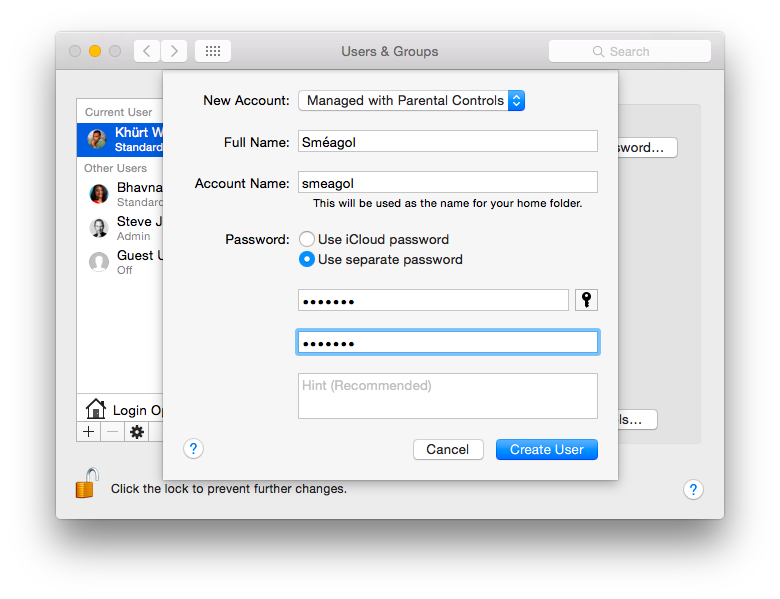
You may have to click the lock icon in the lower left of the screen to make changes.
Click the + button in the lower left corner to bring up the new account dialog. Choose Managed with Parental Controls from the drop down and enter a name for the account. Enter a password and make sure to write it down and store it somewhere safe. You will also need to give it to your child.
Local OS X Yosemite accounts can use local passwords for authentication or can be linked to an iCloud account. Once linked, the user can login to the Mac using the same password they user for their iCloud account. If your kids are too young for an email account, skip this step.
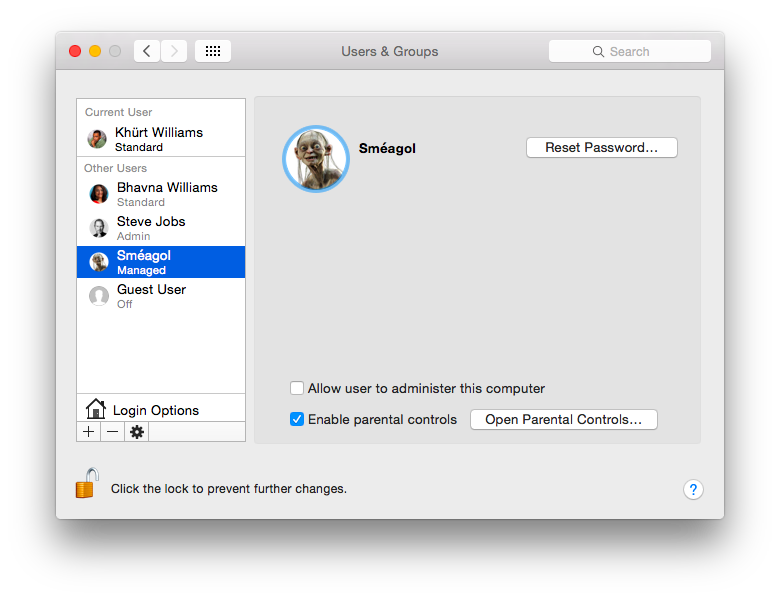
User names like “Khürt Williams” or “Khürt” are helpful but feel free to be creative. If you children are fans of the Lord of the Rings Trilogy, perhaps “Sméagol” is a good choice (Ok, not really).
Click Create User and voilà, you have a new Managed account. To customize the account, clock the image icon and choose and image from the defaults or drag one from your hard drive on to the icon to change it. The next step is to add the Parental Controls to the account.
Parental Controls
It is best to have your kids sit with your while you do this so you can explain why you are making these choices.
Select the account to be managed and click Open Parental Controls....
Apps
Apple has provided some pre-configured applications controls based on age groups. For most people these pre-configured controls will do just fine. However, a parent can customize these based on a child maturity level. Click the arrow to show the list of applications and select the ones you want to give your child access to. Your child will be limited to running only those applications that you have explicitly selected.
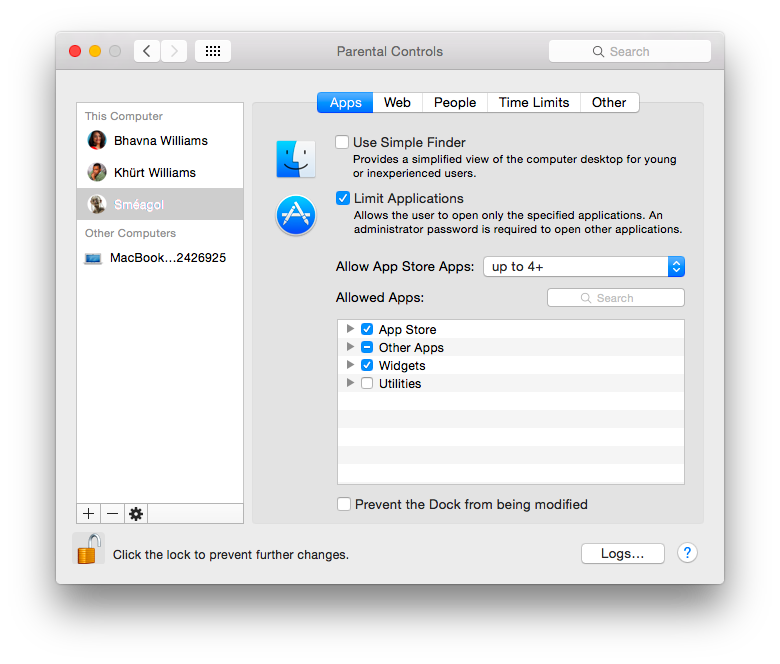
Web
Parents can select from one of three choices in the Web tab. You can allow unrestricted access to website for older or more mature kids and apply a web filter to keep kids safe from adult web sites. For younger kids, parents can limit access to a specific set of web sites. With that option, children will not be able to visit any web site not explicitly allowed in that list.
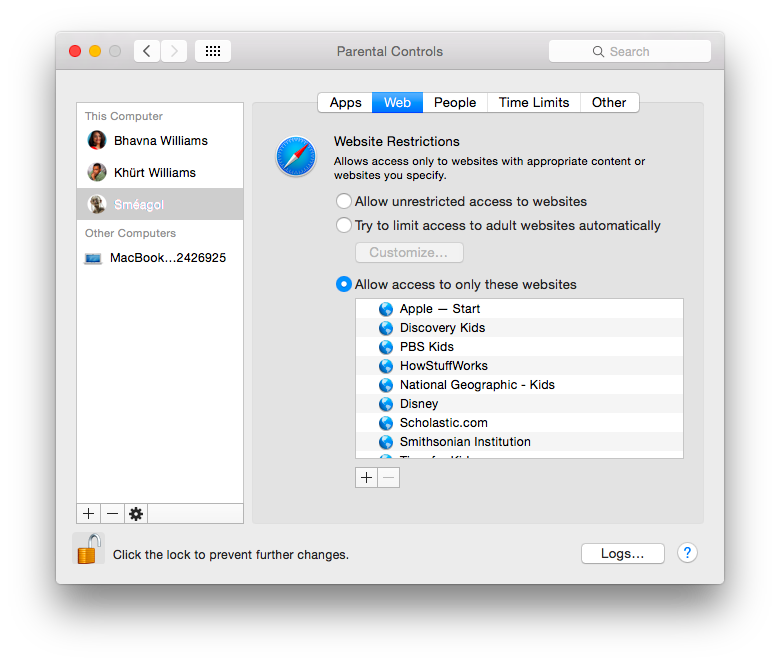
People
With this tab, a parent can limit a child's contact via email. By adding an email address to this list, OS X will only allow email exchanges between that address and your child email tool. NOTE: This only works with Apple's Mail application so it might be a good idea to prevent access (via the Apps tab) to any other email application and block access to web-based mail.
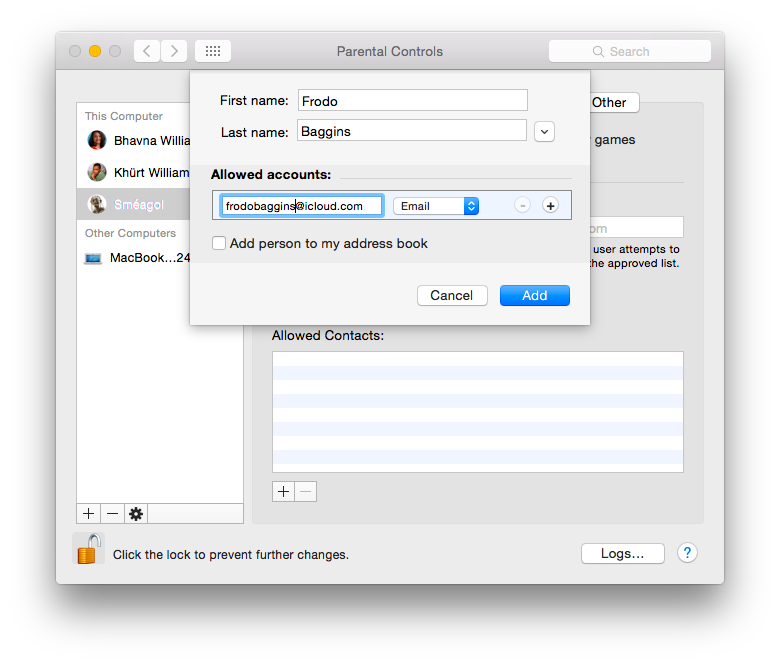
Parents also have the option of receiving an email alert when their child receives or sends email to an unapproved email address.

Time Limits
This is perhaps the most important setting in the Parental Controls preferences. We all know our kids spend too much time online or on the computer. We also know that the older kids needs access to the computer and to the web to complete homework assignments. So as Parents we need to balance homework computer time against hanging out online computer time. This is where you set that up. Spend some time to think about what's right for your family.
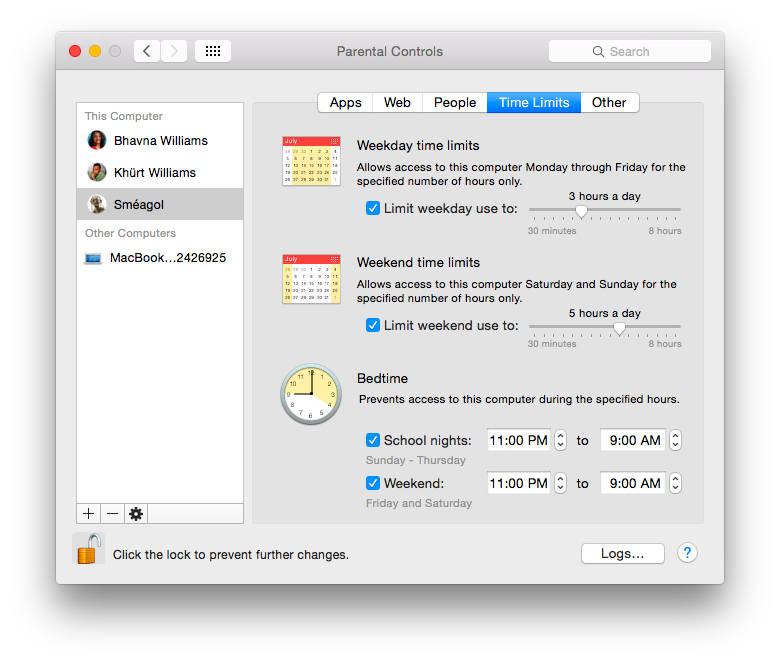
Other
This one is self-explanatory. Some kids can't be responsible with a webcam, especially teenage kids with a laptop. I don't let my kids change their computer password. I want to be able to see what they are up to. Logs can help with that.
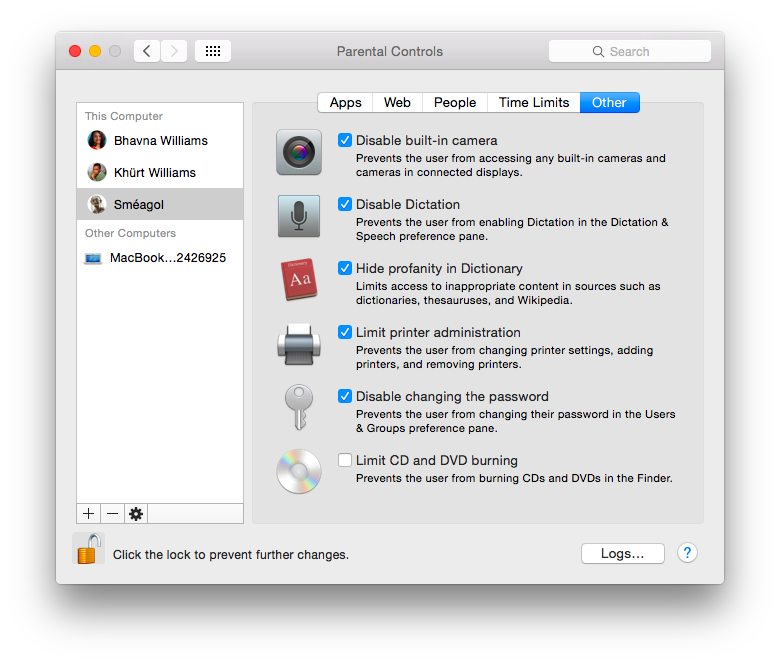
Logs
I want to be able to see what they are up to. Logs can help with that. OS X will keep a log of every web site your kids successfully visited as well as which ones you blocked but they attempted to visit. You'll know if your young teenage boy has hit puberty by his sudden interest in porn sites. You'll know if your child was using study time to hangout on Facebook or Twitter. Time, date and web site address are recorded in the log.
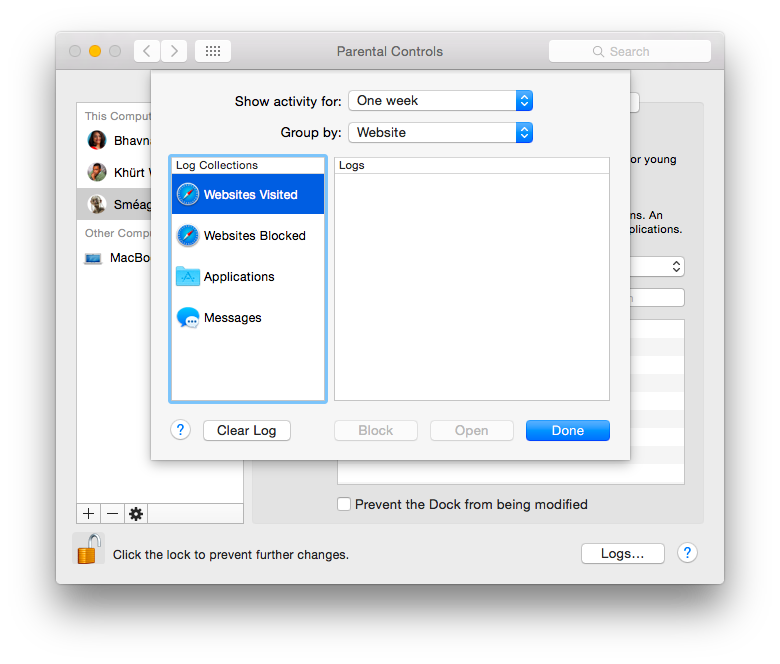
Conclusion
In my house computers and the Internet are a privilege, not a right. I teach my kids safe computer and Internet habits but a Managed Account with Parental Controls provides me with a level of comfort that my rules are being followed.


Great post Khürt!
Can I translate it over my "Apple related" italian blog? Of course I'll provide your name & link as the original author.
Let me know
Absoultely. Be my guest. Everything posted on my web site is Creative Commons Attribution-NonCommercial-ShareAlike 4.0 International (CC BY-NC-SA 4.0) unless stated other wise.
Great! I've started the translation. When finished I'll provide you the full URL…